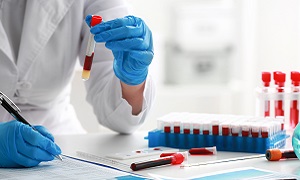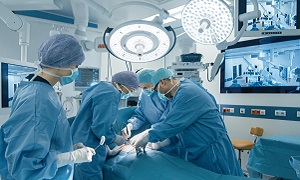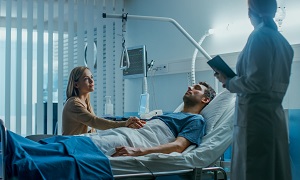Surgical Thrombectomy
Surgical thrombectomy is a surgery for removing a blood clot from one of your blood vessels. The blood clot might be in an artery or vein in your leg, arm or another part of your body and it might be blocking blood flow to your tissues or organs.
Blood usually flows freely through your blood vessels, arteries and veins to carry oxygen and nutrition to various parts of your body. Sometimes, however, the blood can thicken and clump to form blood clots in one of these vessels. This leads to the blood flow getting blocked and when this happens, nearby tissues can get damaged.
Purpose
A surgical thrombectomy is required when you have a blood clot in an artery or vein. Sometimes, the procedure might be needed for a blood clot in an organ or other part of the body. Several problems can be caused by a blood clot, which includes:
- Swelling, numbness or pain or tingling in the arm or leg
- A cold feeling in the area
- Enlarged veins
- Muscle pain in the area
- Loss of function of an organ
- Death of tissue
- Blood clot moving to the lung that causes breathing trouble and risk of death (pulmonary embolism)
Surgical thrombectomy is usually advised by your doctor usually when you are having a very large clot. He/she might advise surgery if the blood clot is causing severe tissue injury. However, it is worth noting that there are various kinds of treatment for blood clots. Generally people with blood clots are treated with medicines which are known as blood thinners. You can receive them through an injection or through an IV. They prevent blood clots from getting larger.
Preparation
You might require a few tests before the surgery. They include the following:
Ultrasound
Ultrasound can help to see a DVT as well as to measure the flow of blood in your leg.
Blood tests
Venogram
Venogram is performed for getting images of the blood clot and of your veins.
CT scan
CT scan is done for getting detailed images of your blood clot.
MRI
MRI is also performed to get more detailed images of the blood clot.
You might need to stop taking some medicines before the procedure, which includes blood thinners and aspirin. If you smoke, your doctor might ask you to stop it before your surgery. Smoking can interfere with your healing.
If possible, it is important that you arrange for someone to take you home from the hospital since you will be unable to drive yourself. Avoid eating or drinking after midnight the night before your procedure. Keep in mind that you need to follow any additional instructions from your doctor.
Procedure
An IV is put in your arm or hand before the procedure begins. You will receive your medicines through this IV. You might also receive a blood thinner, as this can prevent blood clots from forming during your procedure.
You will also receive anesthesia through the IV line. This will help you get unconscious during the procedure and prevent any pain. Any hair in the surgery area might require removal as well.
Throughout the surgery, your surgeon might be using X-ray images continuously. He/she will make a cut in the area above your blood clot and then open the blood vessel to take out the clot.
Sometimes, a balloon attached to a thin tube can be used in the blood vessel to remove any remaining part of the clot. Your doctor might use a stent in the blood vessel to keep it open.
Then your doctor will close and repair your blood vessel and let the normal blood flow restore. After this, the incision in your skin is closed and bandaged.
After the procedure
You will need to spend some time in a recovery room. Your vital signs, such as your heart rate and breathing will be monitored by the healthcare team. You should be able to go home the same day. You might receive instructions from your doctor regarding activity, medicines and caring for the incision site.
After you go home, you might be requiring medicines for stopping blood clots from forming. You might also need to take medicines to prevent any clots before any future surgery. If you feel you need pain medicine, you can take it.
Avoid any kind of strenuous activity for some days. Try to wear loose clothing as it can help your blood flow smoothly, thus preventing clots from forming. Try to avoid smoking as it can lead to blood clots.
If you experience any of the following, you need to inform your doctor:
- Swelling or pain that gets worse
- Chest pain
- Weakness or numbness near the surgery area
- Symptoms of a blood clot, such as swelling, pain, warmth and redness
- Bleeding from the incision or other areas
- Fever
- Shortness of breath or trouble breathing
Risks
Sometimes there is a risk that your blood clot might form again. Depending on your general health, your risks can vary and how your blood clots. They can also vary depending on how long you have had the clot and its location on your body. Some other risks include:
- Excess bleeding that might even lead to death
- Reaction to anesthesia
- Infection
- Damage to the blood vessel at the site of the blood clot
- Pulmonary embolism




